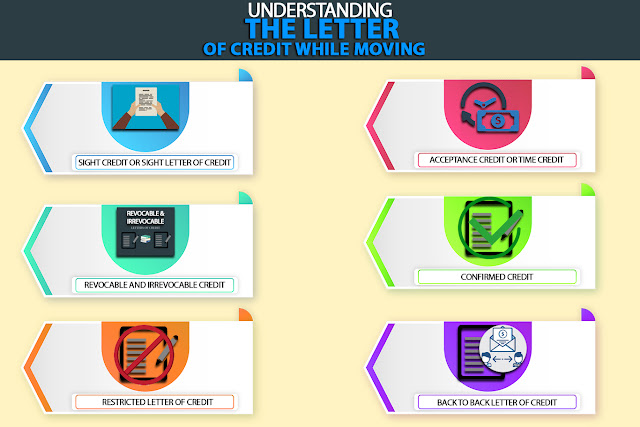A letter of credit is a guarantee of the buyer
to the seller about the payment that has to be made. The basic structure of the
Letter of Credit consists of four elements: Applicant (the buyer or the
importer of goods), Beneficiary (the seller or the exporter), Issuing Bank
(lends its guarantee or credit to the transaction), and the Negotiating Bank
(beneficiary's bank).
The letter of credit assumes that certain
conditions would be met by the client or the buyer for the payment in question.
This thing may be arranged by the customer (buyer, client) for the bill amount
to the seller (beneficiary; in this case, the transport company) for the
services rendered. The payment is expected to be made on time. In cases there
is a delay, the bank makes the payment of the balance amount on behalf of the
buyer. Banks collect some percentage of the amount in the transaction as a fee.
This fee depends on the amount requested for the deal in the letter of credit.
This is significant to note here that the sales agreement between a buyer and
seller is not a part of the credit letter. The letter of credit may only use
the information in the contract.
What does the LOC contain? It contains
information about the agreement between the buyer (client) and the seller (Movers and
packers). The deal includes charges for the move, the quantity of the
goods to be transported and other matters regarding the time and distance for
the shift.
What is the necessity for LOC? The LOC gives
confidence to the seller that he will receive the payment agreed upon by the
buyer/client.
How does one get the letter of credit (LOC)? It
can be obtained on request from the bank where the buyer has his or her
account. The details about the amount, name, and address of the beneficiary,
shipping date, mode of shipping, etc. have to be furnished by the applicant or
the buyer. When the bank receives the necessary details, it will be responsible
for sending the money.
What is the significance of the letter of credit
(LOC)? The LOC forms a gauge by which payments can be made when a deal is
struck between a mover and a client. This LOC will help both the parties to
avoid engaging in endless bargaining. Here are some types of Letter of Credit.
1. Sight Credit or Sight Letter of Credit
This thing is a transaction that is done
immediately upon presentation of valid documents. The needed funds can be taken
right away. This document specifies the payments that need to be made for goods
and services. For example, if a particular company of packers and movers Bangalore have offered to
move your goods from Delhi to Mumbai, the LOC will give the details of how much
is to be paid and when it is to be done. It is a kind of agreement.
2. Acceptance Credit or Time Credit
In this case, the bills have to be presented and
honored on their respective due dates. For example, in some cases, the purchase
and the payment may take place on the same day. In other cases, the payment may
be made after some time. This last period is called the usance for sale. The
buyer makes the payment on the stipulated date of the LC.
3. Revocable and Irrevocable Credit
Revocable credit is where the terms and
conditions can be changed or even canceled without giving any prior notice to
or getting the consent of the beneficiary. The cancellation can be made without
any notice. A permanent credit is just the opposite where the terms and
conditions cannot be changed or amended. Letters of Credit usually are
irrevocable.
4. Confirmed Credit
This type of credit is that one where a
different bank confirms the loan, i.e., a bank other than the issuing bank. In
this kind of deal, the beneficiary will have a firm undertaking from both the
issuing as well as the confirming bank. The bank that partners as a confirming
bank, become a part of the contract of the letter of credit.
5. Restricted Letter of Credit
In this case, a specific bank takes on the task
to accept, pay, and negotiate the LC.

